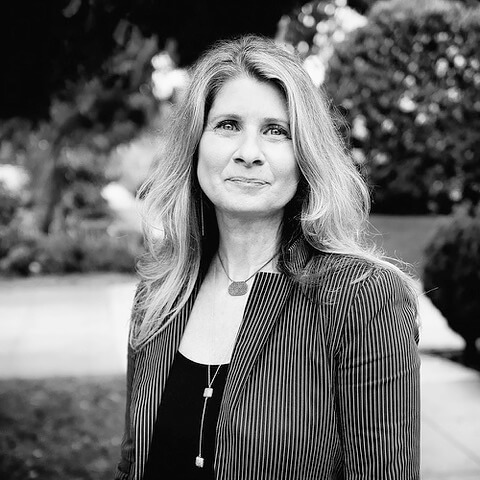Debe Arlook is an award-winning American artist working in photography. Through traditional and diverse photographic processes, Arlook’s work is a response to her surroundings and the larger environment as she attempts to understand the inner and outer worlds of human relationships. Arlook’s dedicated spiritual practice and degrees in filmmaking and psychology inform these views. Her project
‘one, one thousand...' won the October 2022 Solo Exhibition. We asked here a few questions about her life and work.
All About Photo: You studied Visual Communications and Psychology but in the end why did you choose to pursue a career as a photographer?
I’ve always loved photography and I see it as a combination of both visual communications and psychology. It is a mode of exploration, expression and communication. I came to experience how, when art is made from an authentic place, it can deeply connect with others in ways I could not have imagined. When that happens, I feel like I’ve received a precious gift.
Can you recount your initial encounter with photography?
Growing up, my father photographed and filmed family events. We’d gather to watch the movies or sit together with photo albums in our laps laughing with each memory. I must have shown interest because my parents gave me a Kodak Agfamatic when I as 8 years-old. I remember I felt like an explorer on expedition with the camera. It gave me permission to see the world differently and allowed me to question reality with new eyes.
Do you remember your first shot? What was it?
Yes, my first shots were close-up, abstract images of tree bark. I must have thought the lens was like a microscope.
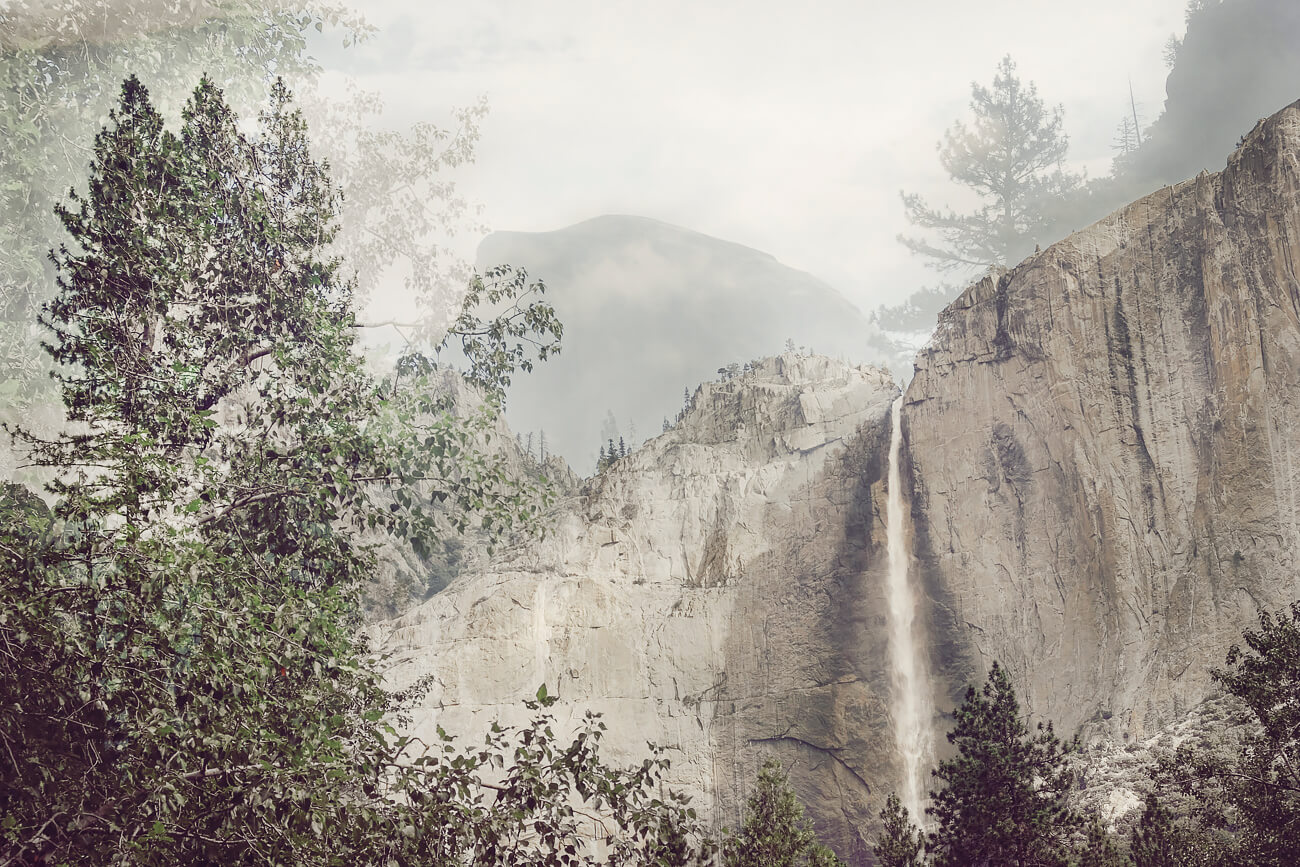
Dreaming Yosemite No.1 © Debe Arlook
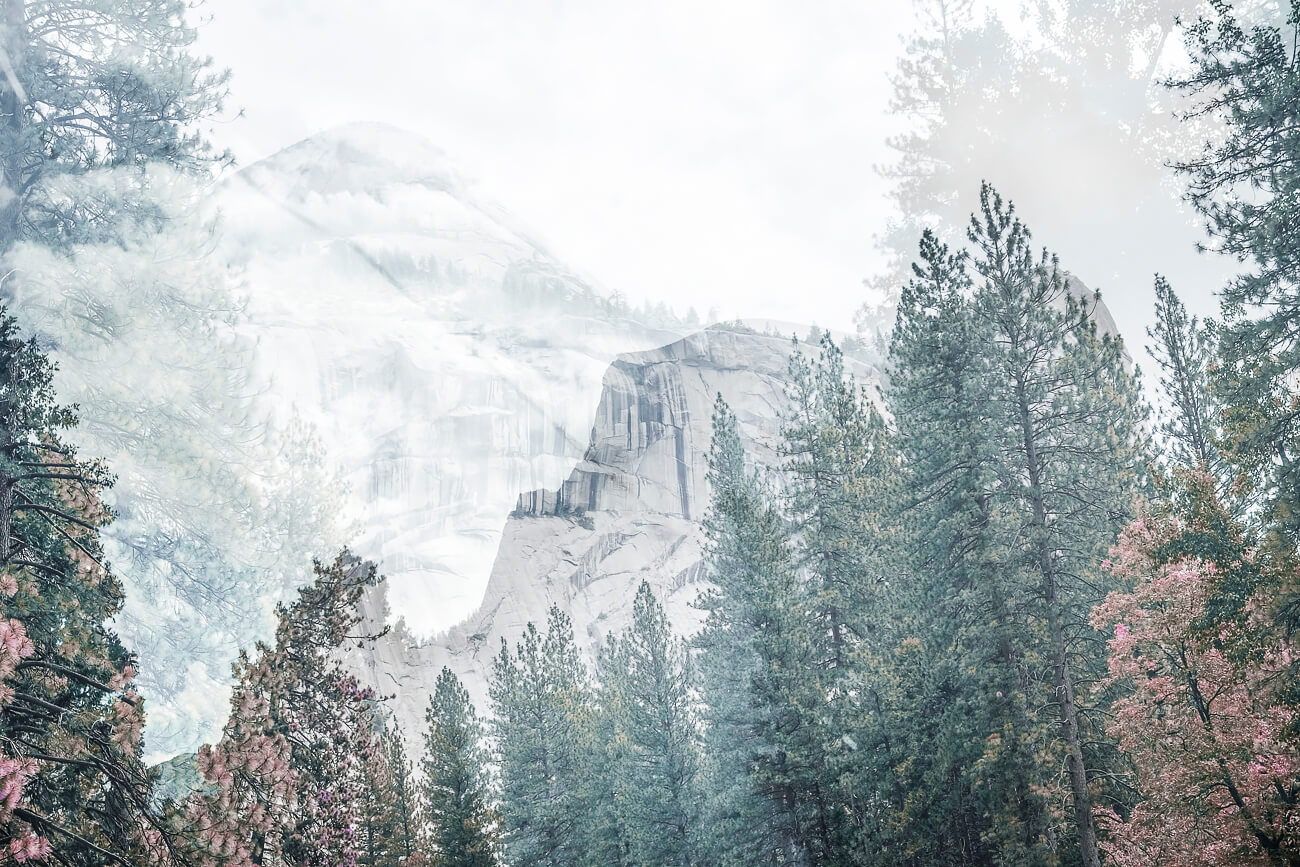
Dreaming Yosemite No.2 © Debe Arlook
Like most things, it happened over time and still continues to evolve. As a street photographer, I observed people, location and how light, shadow, design, and movement tell a story. When I began conceptual projects, I was interested in landscapes marked by humanity but devoid of people. This took me on an exploration of abstract work that addressed life’s existential questions like “why do we exist?” and “what is the soul’s purpose?” During that time I was facing my own life challenges, and the work I made became an expression of questions like these. This exploration inspired new expressions with each project. During a workshop, I was advised to settle on one signature style. As much as a signature style is important, an artist must learn to trust their instincts in order to develop their work. Following my instincts allowed me to discover my unique voice. By trusting my process, I’ve learned that I need to catch up with the work I make. Meaning, I don’t question the subject matter I’m drawn to or how I process the work. The meaning becomes apparent somewhere along the line. It’s pretty cool.
Who or what influenced you?
Whether directly or indirectly, knowingly or unknowingly, influences and inspiration come from everywhere. This includes people, the environment, politics, conversations, all forms of art including nature, storytelling, poetry, books, paintings, theatre, films and photography. The list goes on. When my interest is peaked or I feel my heart open, I know to pay attention. In addition, my spiritual practice, meditation and personal growth greatly influence my work.
What details do you believe make the best photographs? How do you go about focusing on them in your work?
The best photographs evoke a strong feeling or curiosity. They raise more questions than they answer. I don’t focus on these details when I’m make the work. I’m less in my head so I can I follow my intuition.
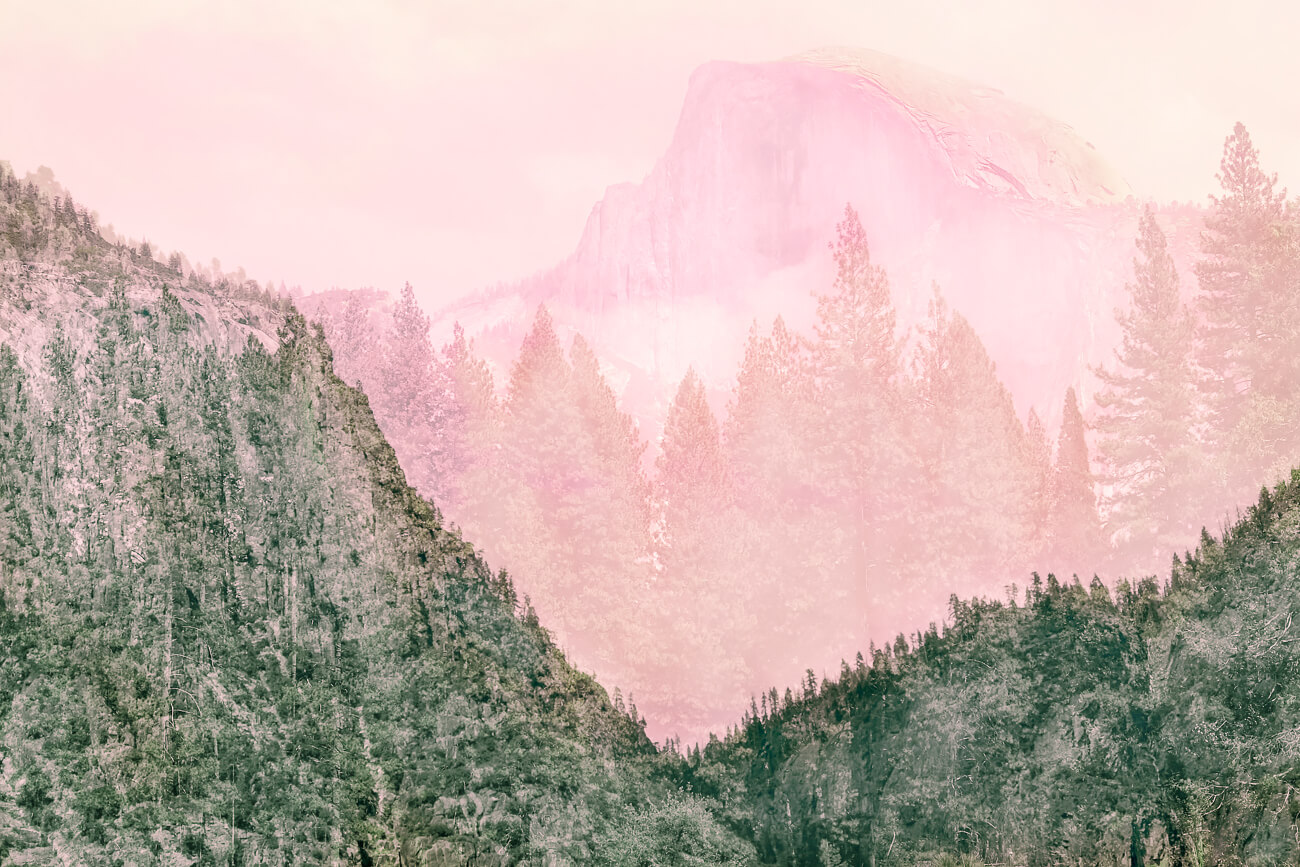
Dreaming Yosemite No.3 © Debe Arlook
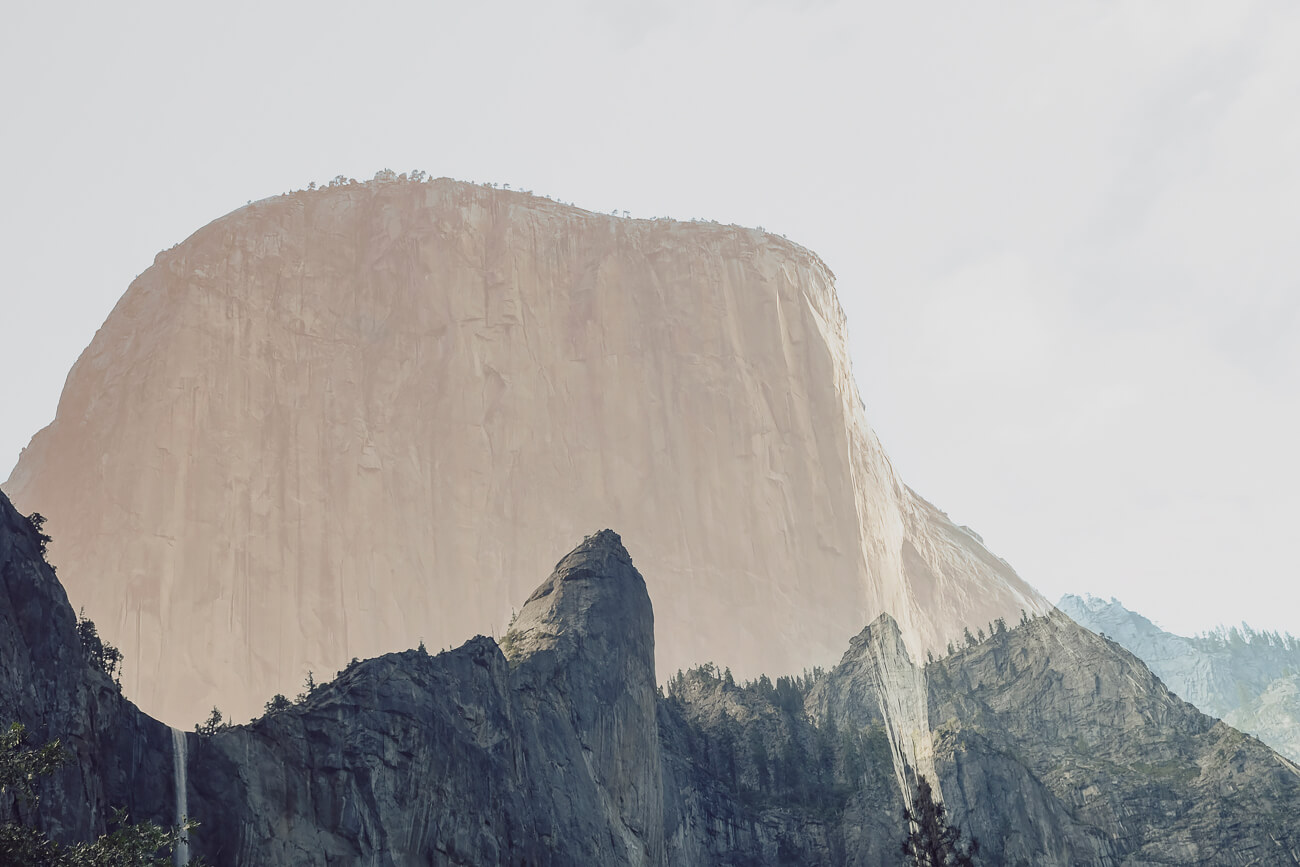
Dreaming Yosemite No.4 © Debe Arlook
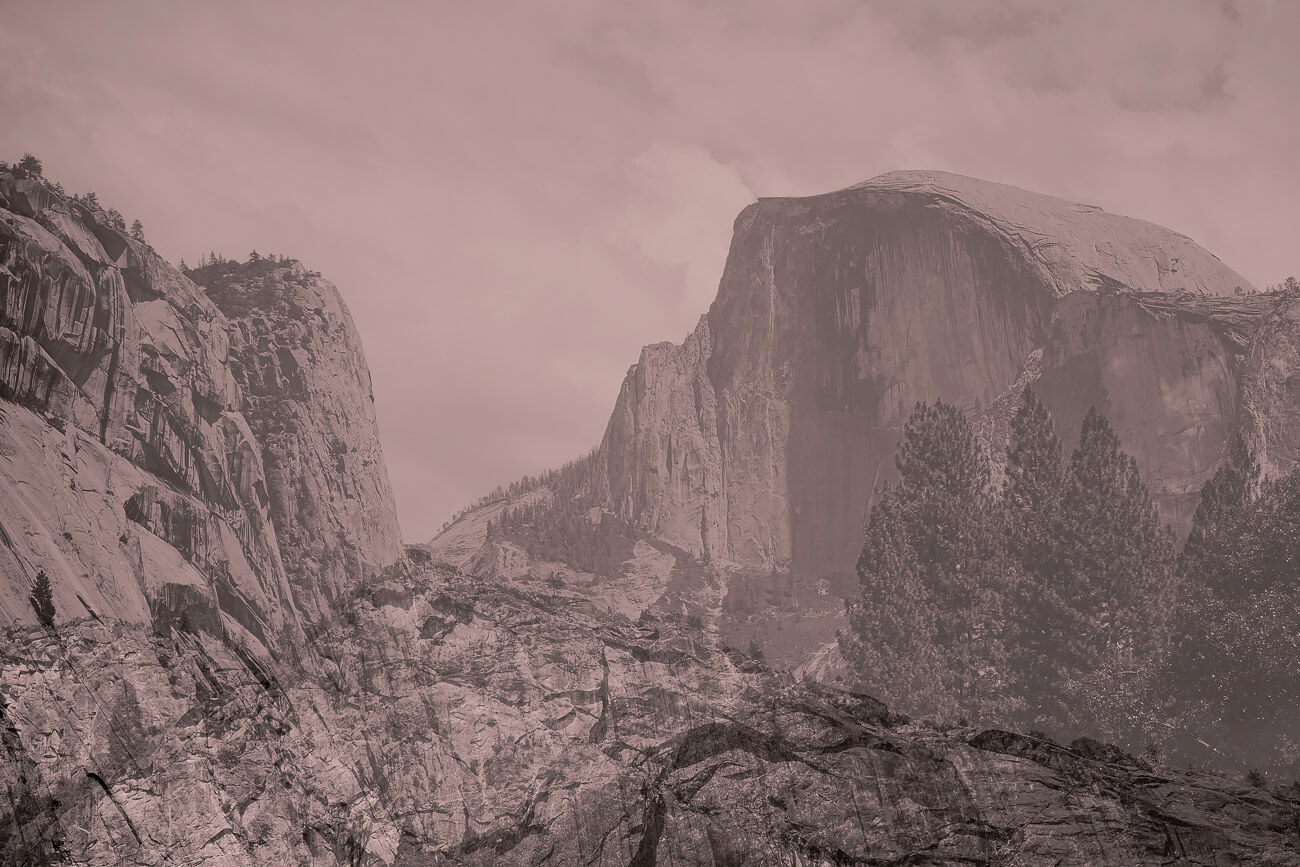
Dreaming Yosemite No.5 © Debe Arlook
I don’t really have favorites but there is one project that holds a special place in my heart.
'one, one thousand…' shares the story of my sister and her adult son who is non-verbal and lives with a rare and incurable type of epilepsy. There is a print in that series that is of particular meaningful.
'Unspoken' is a unique mixed media portrait of my nephew. It was purchased by the mother of a child who is also non-verbal and living with epilepsy. The mom wanted to hang the portrait where she could see it everyday as reminder that her daughter is much more than she appears. When I made the piece I had no idea it could have such significance in someone else’s life. Seeing the mom’s emotional response was very touching and humbling. It affirmed the power of art.
Why do you use mostly mixed media?
I believe our existence on earth is abstract and poses more questions than answers. In my life journey of exploration I use photographic art as an expression of spiritual inquiry, personal growth and evolving understanding. Because straight photography cannot always convey all the nuances that I attempt to express, I use mixed media to create an abstract visual language for each project. Variations of color, text, collage, and tactile materials create a sort of alphabet that form words in a sentence. When combined, the photographs become stanzas of a poem or paragraphs of a story.
'one, one thousand...' is a very personal project to you and your family, how/when did you decide to work on it?
During the first summer of the pandemic, I was with my family in Colorado. I was photographing David when a voice popped into my head, “You need to make a project about David and Lori.” I had never heard a voice speak to me like this before. I felt the enormity of what I heard. I somehow knew that everything in my career had led to this moment, even though I had no idea what the project would look like. By making this work, I could be a witness to my sister’s life as a single parent and caregiver, and be a “voice” for David, who is non-verbal. Since he was an infant, I have supported Lori emotionally but now I could support her on a whole new level. We could raise awareness about Lennox-Gastaut Syndrome and the project could be a vehicle for Lori to address audiences on the topic.
I asked Lori if we could make a photo project about their lives. She went silent and froze. Waiting for the answer I remember thinking, “You have to say yes, we’re meant to do this!” The moment was intense. Lori knew she’d be exposing private moments of their lives but also knew that by agreeing, their story would touch others in unimaginable ways. With tears welling, she whispered, “Okay.”
I needed David’s consent but I didn’t know if he would respond, and if he did, would I understand him? I explained to him that I would honor him and not do anything to make him uncomfortable. If he ever wanted me to stop photographing, he would have to let me know somehow. In response, David did something he’d never done before. He leaned forward bringing his face very close to mine and stared into my eyes, holding his gaze. Then he pulled back and smiled. Lori and I were in shock. We had our yes. I ended up staying a month.
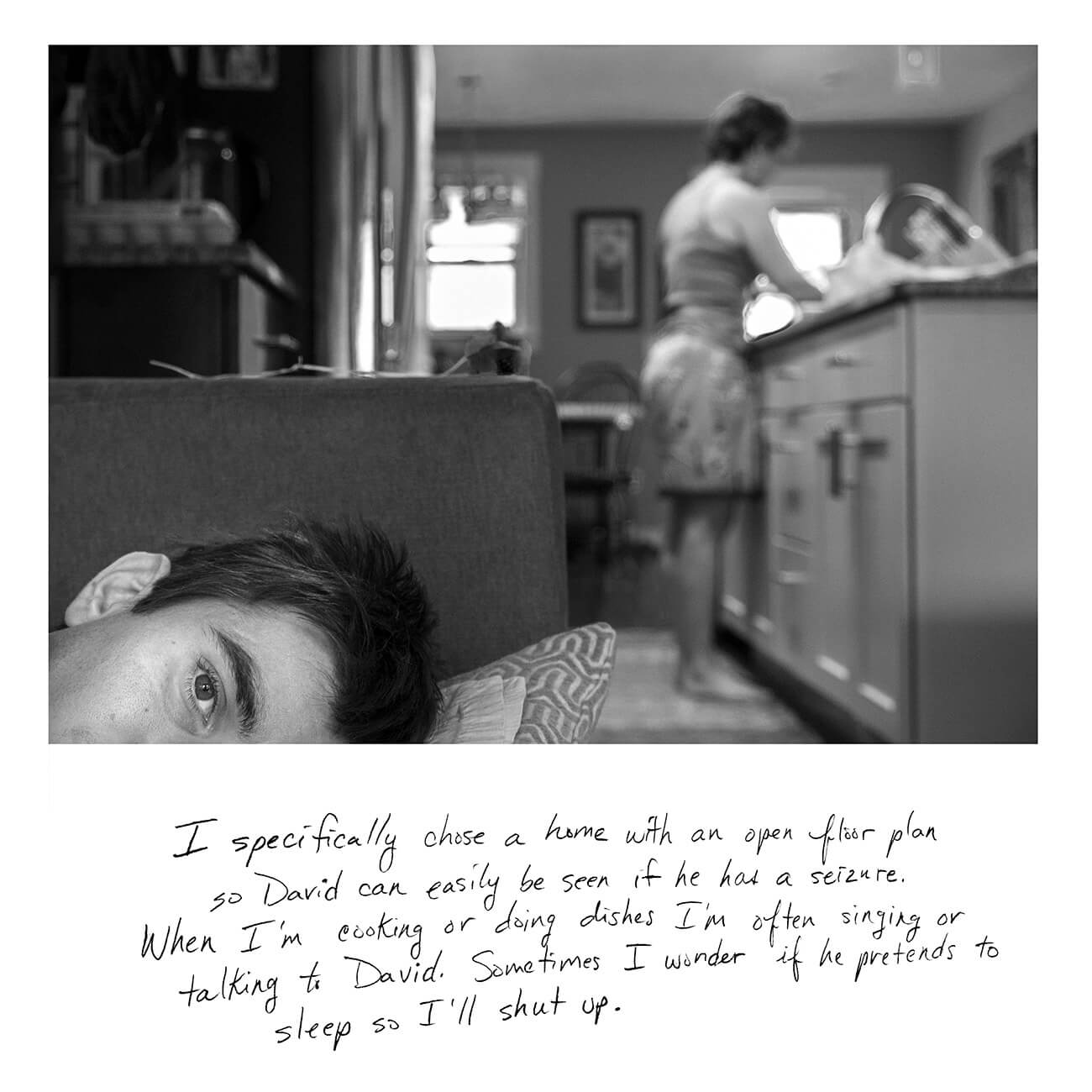
'one, one thousand…' Floor Plan © Debe Arlook
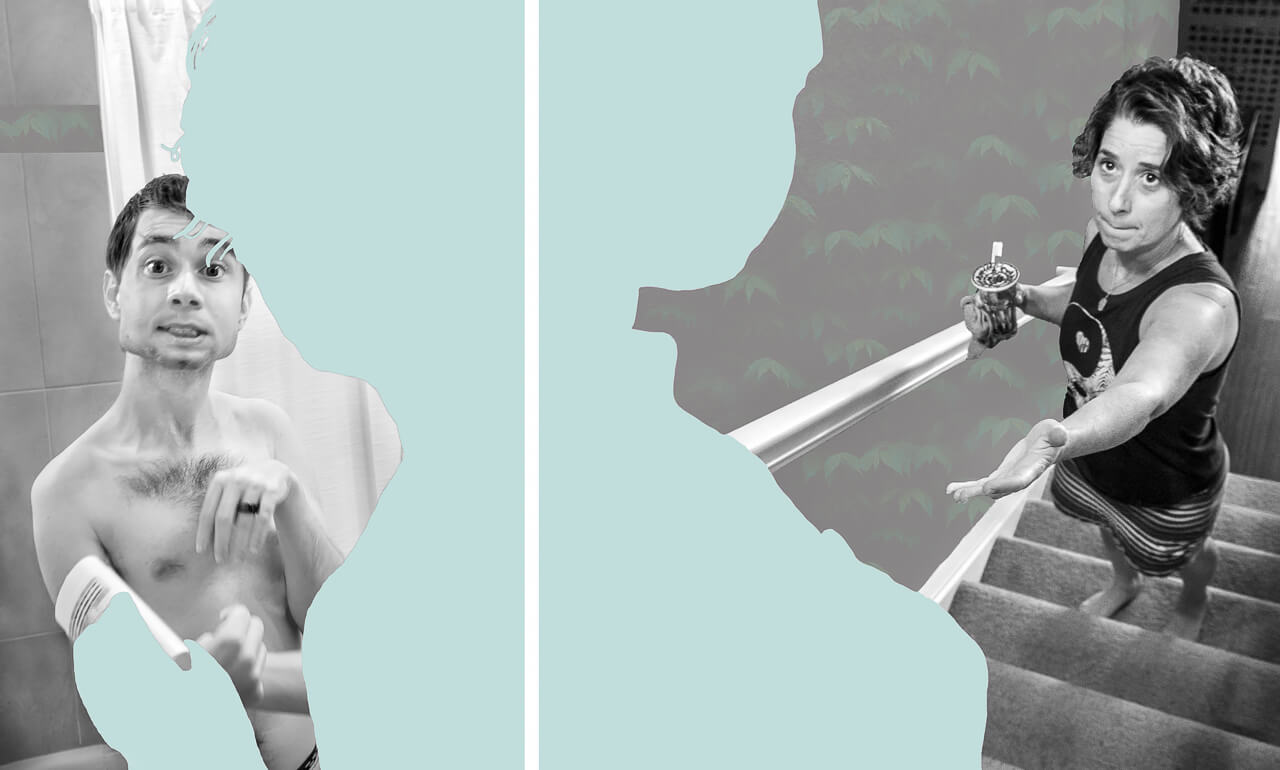
'one, one thousand…' Constant Presence © Debe Arlook
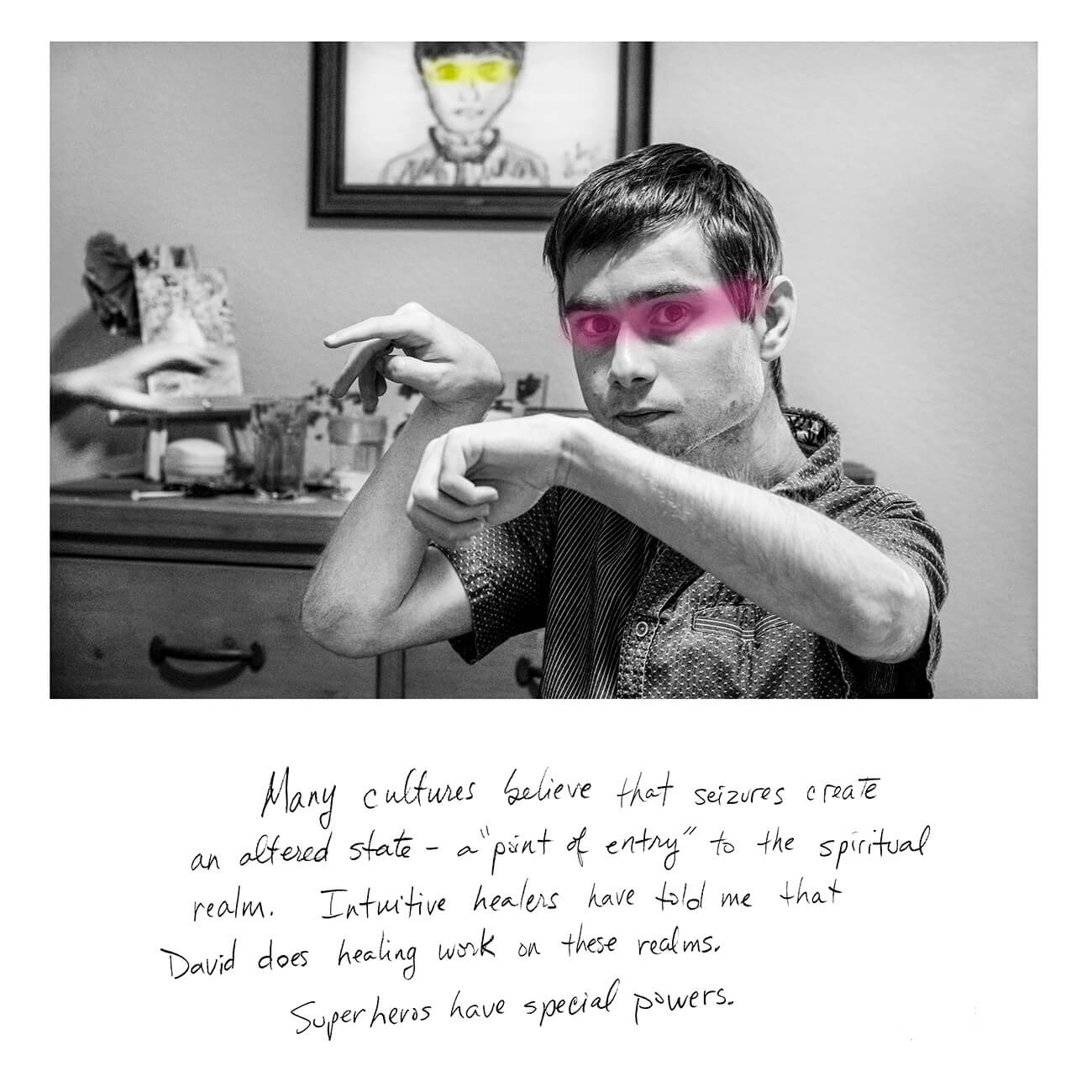
'one, one thousand…' Superhero © Debe Arlook
Yes, and it is helping raise funds for research but we are just scratching the surface. Lori and I gave presentations at two solo exhibits, one in Boston for Harvard Medical School and Boston Children’s Hospital and another in Colorado at Anschutz Medical School. We’ve been told by doctors, medical students, researchers, Pharma representatives and other clinicians that our story helped them understand the personal experience more than they could have known. Caregivers, people with epilepsy and family members have told us they feel seen and understood. I’ve made a short documentary film that is in need of funding. Our story has made an impact far greater than we could have imagined and hope to reach a wider audience with the film.
Has your project helped your nephew? Your sister?
Because of this project Lori has made new connections with medical professionals that have enhanced David’s care. David lights up with a smile when we share with him how the project touches the hearts and minds of others. For Lori, it is a platform to tell their story at epilepsy focused conferences, which is very meaningful to her.
Do you keep on adding new images?
I have a lot of unedited work to process and am making unique, mixed-media prints for the
Hidden Truths Project. The organization focuses on demystifying epilepsy through art, advocacy and education.
What equipment do you use?
My main digital cameras are the FujiXT 100 and the Sony axiii. I have a 35mm Leica M6 and use a Holga and an old Pearl River for medium format.
Which techniques and materials do you prefer?
For in-camera double exposures, I use the Fuji XT 100. I use the Sony for low-light and straight shooting.
Do you spend a lot of time editing your work?
If it’s a straight image, I use traditional darkroom methods and don’t spend much time editing. For photo-based images it can take multiple hours or days.
How would you describe your photography style?
My work is an expression of intuitive inquiry about life and people with each project changing depending on subject matter. Processes include straight photography and photo-based work and mixed media.
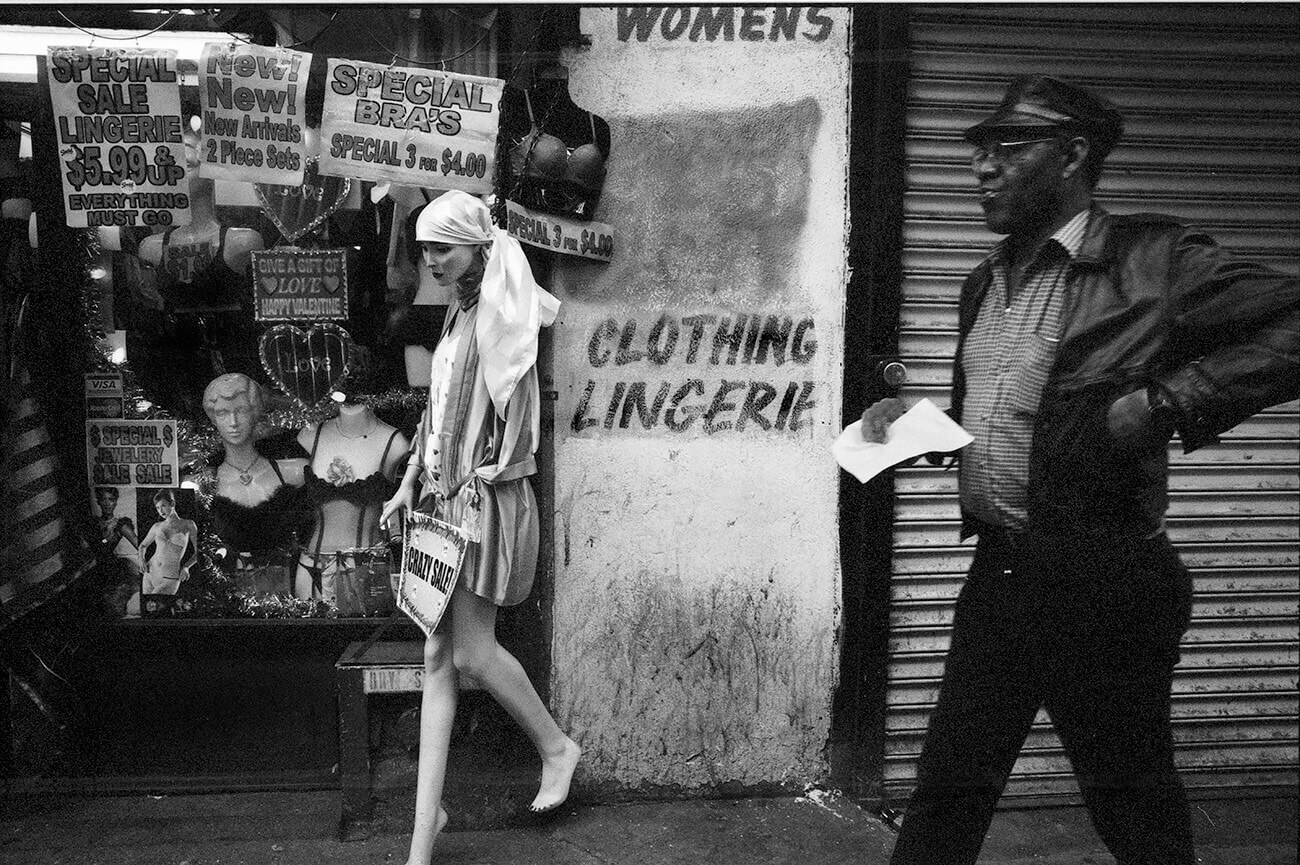
Clothing Lingerie © Debe Arlook
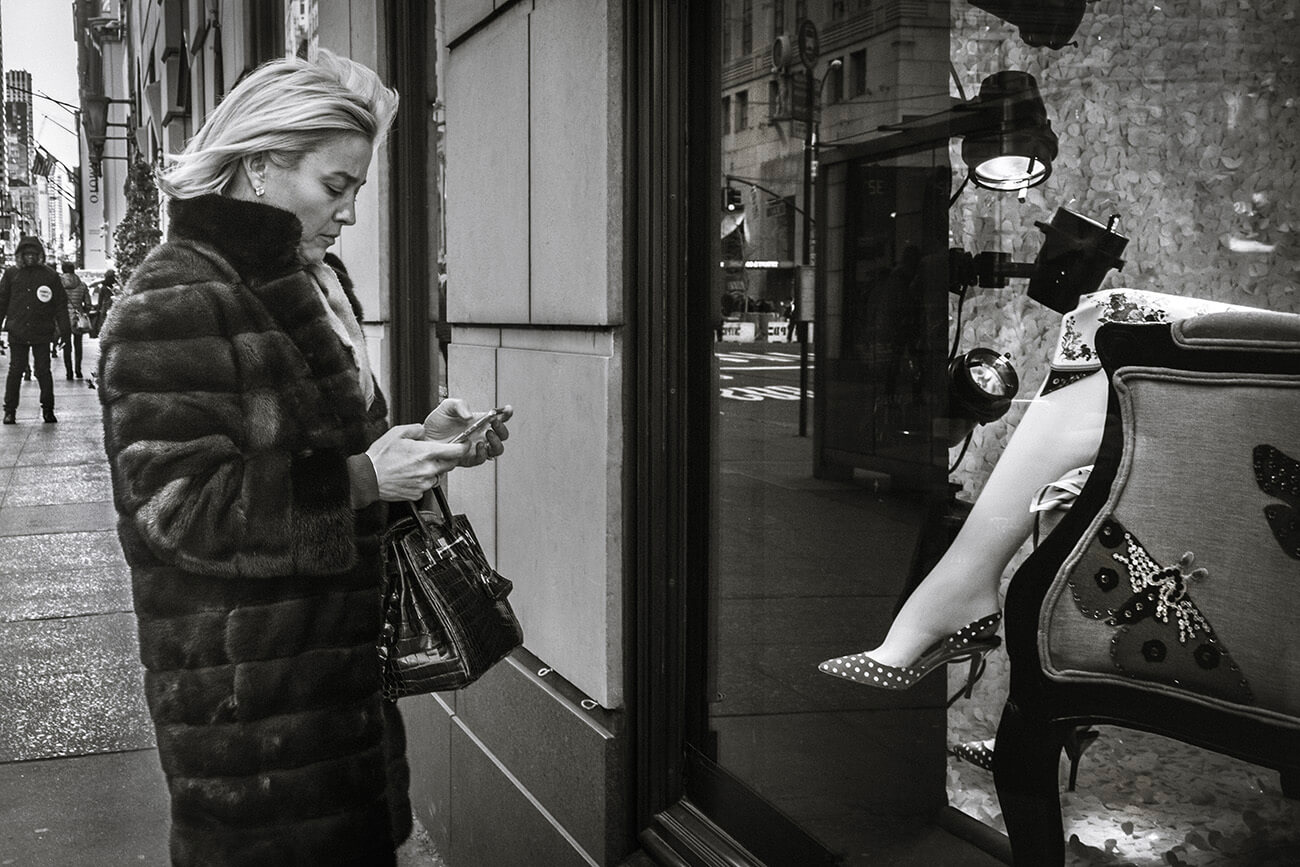
Polka Dots & Butterflies © Debe Arlook
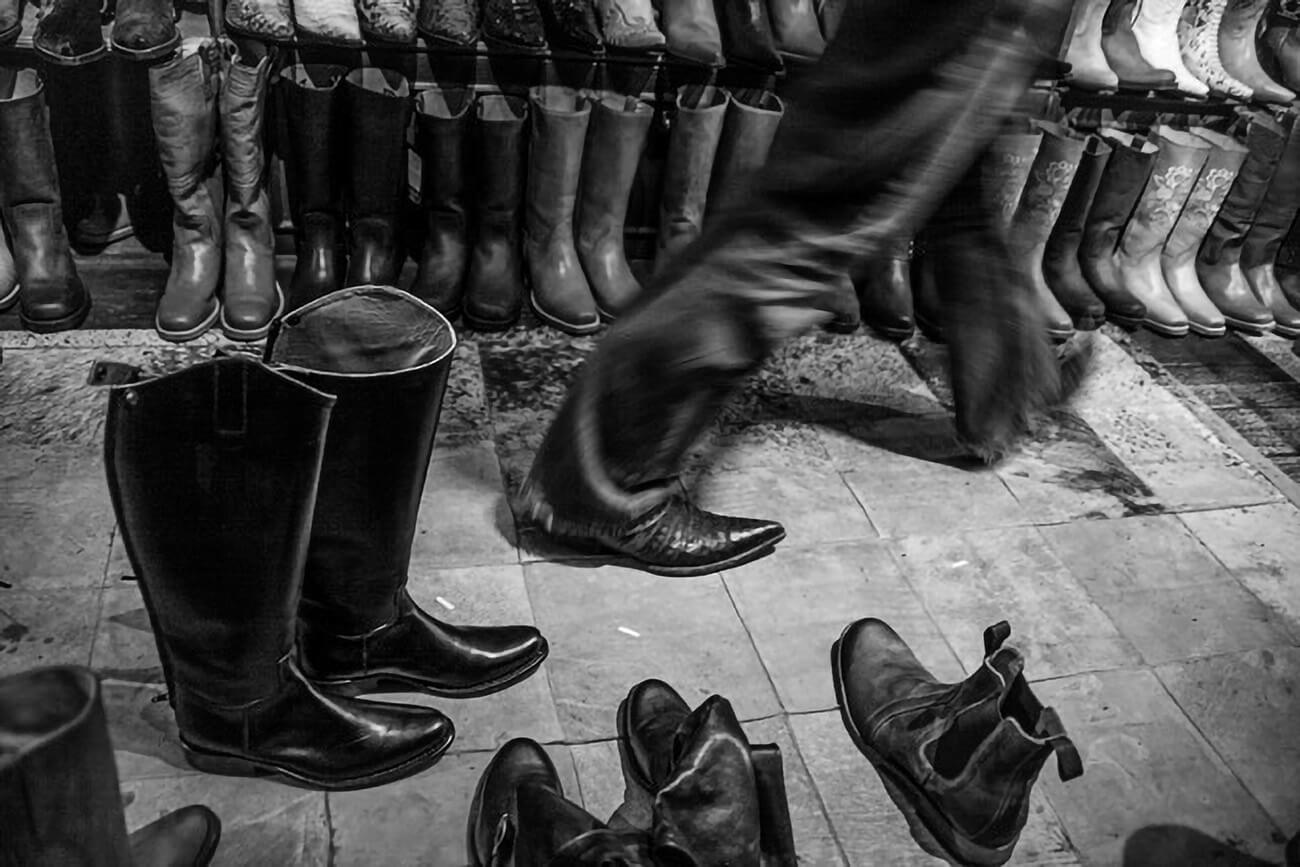
Arsoles, London © Debe Arlook
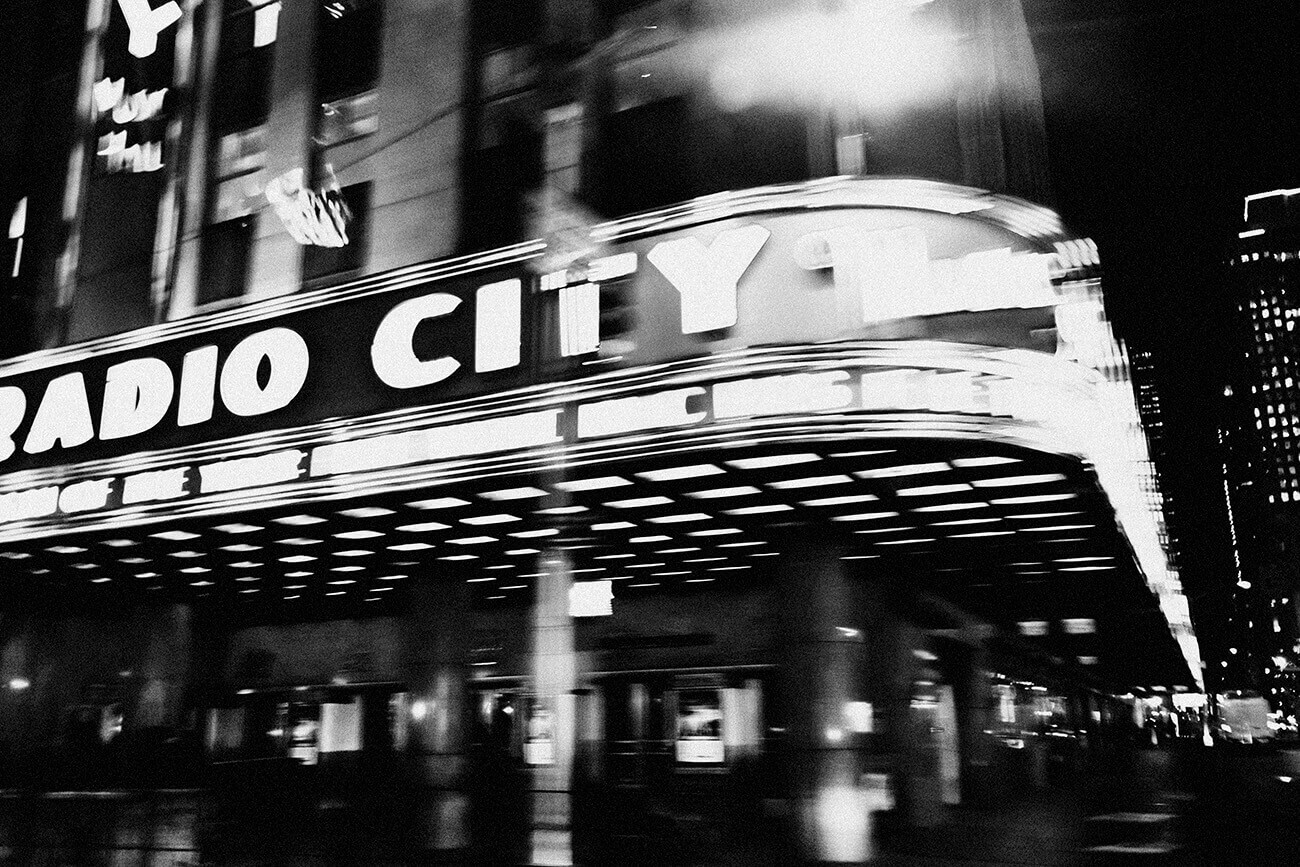
Radio City Music Hall © Debe Arlook
Marty Elkort, a street photographer from the New York Photo League was my mentor. One day he said, “Go to the theatre, museums, galleries and read the classics, like Moby Dick.” It is by far the best advice I was ever given. Any form of art can lead to inspiration.
What advice would you give someone who would like to become a photographer today?
Follow your intuition and be curious and playful. Collect books on art and photography. Frequent museums and galleries. Listen to music and attend symphony concerts. Find a mentor to guide you. Most importantly, don't overthink it and let the creativity flow.
What mistake should a young photographer avoid?
Comparing themselves with others.
What are your upcoming projects?
• My newest project is 'Dreaming Yosemite’ (working title) and I’m excited for the opportunity to share some images here first. I’ve got lots more to work out so it isn’t even on my website yet!
• I’ll be a first round jury for the 2nd
Annual Pasadena Photography Arts Photo Award this spring and encourage your readers to submit their projects. The grant prize includes $2000, a Lenscratch feature, and a presentation with Pasadena Photography Arts
FORUM. Rose Shoshana, from
Rose Gallery, Santa Monica, California is our final juror. Submission is open until March 29, 2024.
• I am thrilled to have four photographs from
‘one, one thousand…’ in the newly released photobook
Memory Orchards: Photographers and Their Families, published by Candela Books.
• This spring/summer, I'm proud to release the first book to focus solely on photography portfolio reviews. Published by
RIT Press, I partnered with
Eric Kunsman to create
Both Sides of the Table: Photography Portfolio Reviews Do's & Don'ts. Forty-five photographers, reviewers, and event organizers share their personal experiences and offer advice for both reviewers and reviewees at all stages of their careers. Eric and I will present on the topic with
CENTER this summer.
• On April 17, in response to the overturn of Roe V. Wade and our fevered election year, I'm moderating a panel discussion titled
HUQ: I SEEK NO FAVOR with
Pasadena Photography Arts. 'Huq' is an Urdu word for rights. 'I seek no favor' originates from an Audre Lorde poem 'a woman speaks.' Fifty artists and thinkers were invited by
Ashima Yadava to artistically express their views for a book on the effects of the ban; here's
mine.
• And lastly, I'm writing a review of Ken Graves' photobook,
The Meaning of Gravity, published by Luhz Press for the
PhotoBook Journal.
If you weren’t a Photographer, what would you be doing?
Gosh, hmm… making films, writing stories, or helping people as a life coach.
Anything else you would like to share?
I love working with fine art photographers. As a mentor for emerging photographers and consultant for established photographers, I offer a free 15-minute consultation to see if we’re a fit. I also extend digital printing services. If your readers would like to work with me or collect my work, I can be reached at debearlookphotography@gmail.com or through
Klompching Gallery’s Special Edition for a print from
'foreseeable cache'.
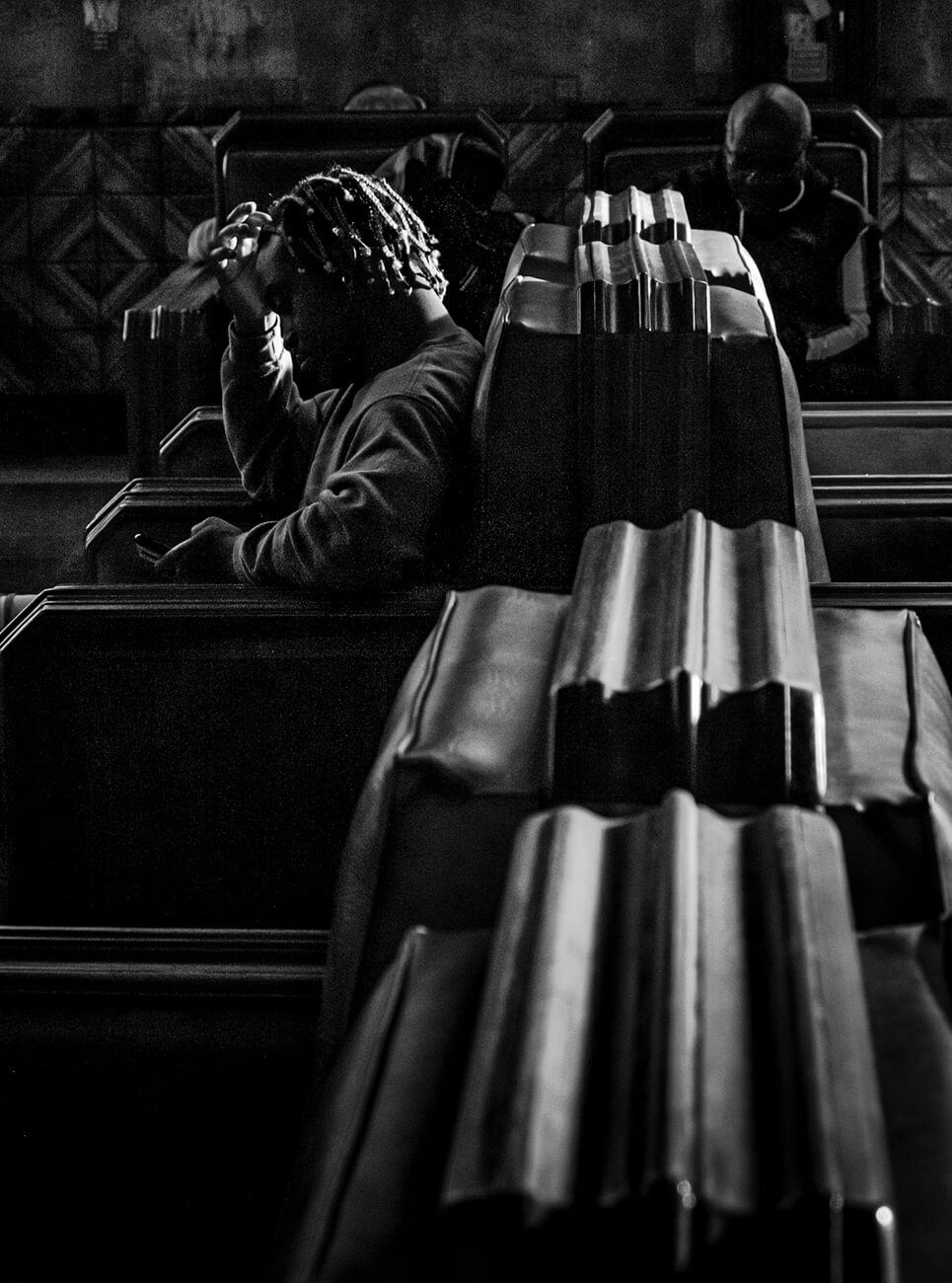
Union Station, Los Angeles © Debe Arlook
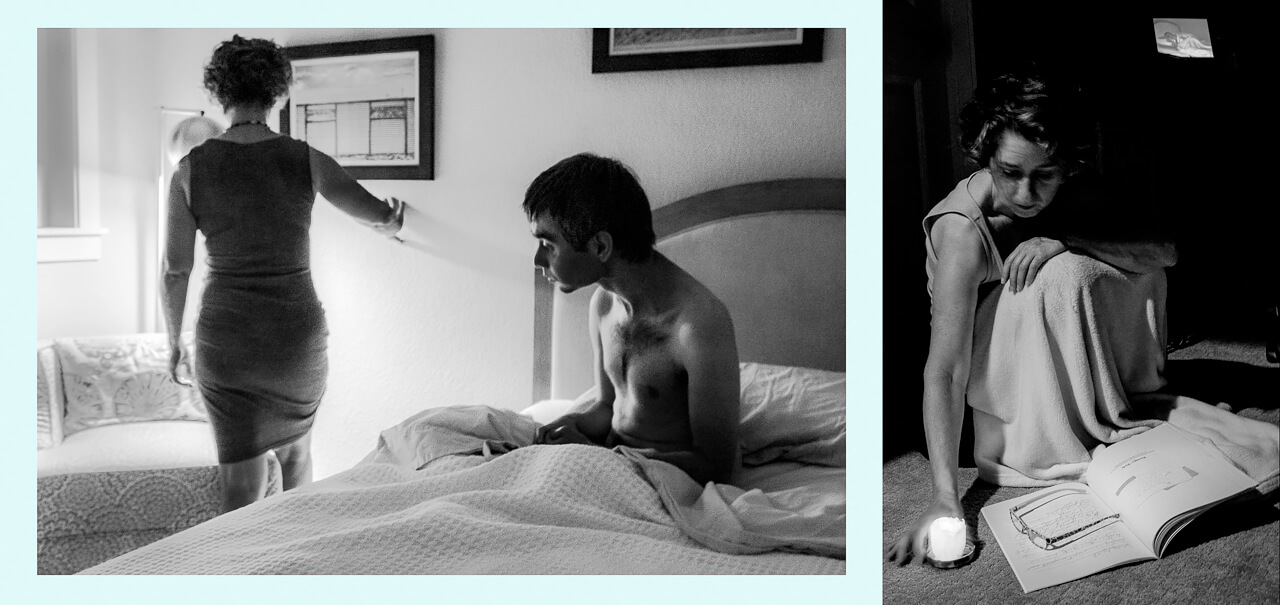
'one, one thousand…' While you Sleep © Debe Arlook
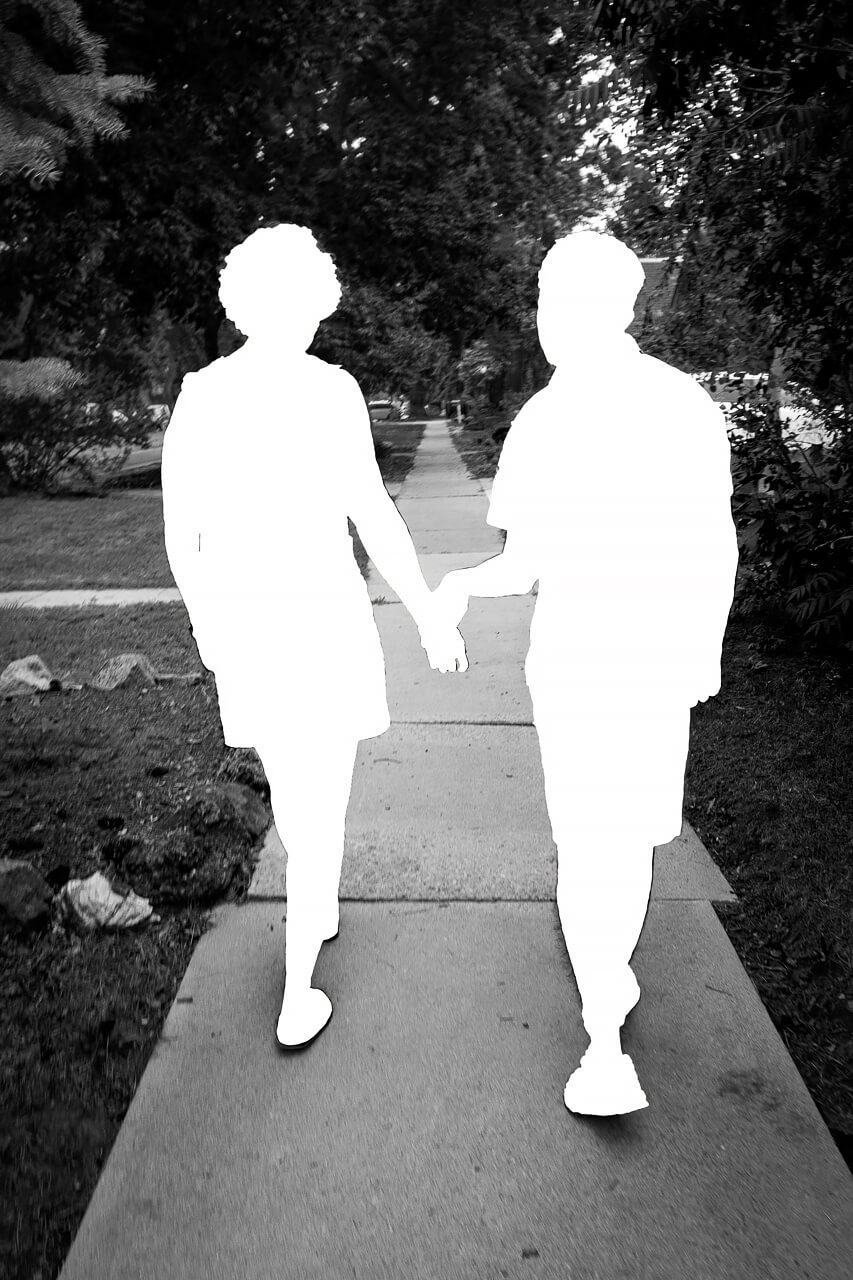
'one, one thousand…' Walk this Life © Debe Arlook
